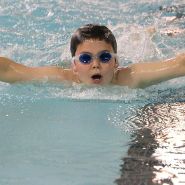Teaching children skills that could save their lives
As a swimming coach I know all the problems with teaching swimming, not least the cost, the extra time it takes, the fact at least one person forgets their swimming kit, or has a cold, or really doesn’t want to get in the water, and let’s not even discuss the ones that are so afraid of water they’re crying on the bus, so do we need swimming on the curriculum?
The National Curriculum states that all schools must provide swimming instruction either in Key Stage 1 or Key Stage 2.
In particular, pupils should be taught to:
- Swim competently, confidently and proficiently over a distance of at least 25 metres
- Use a range of strokes effectively (for example, front crawl, backstroke and breaststroke)
- Perform safe self-rescue in different water-based situations
In 2012 371 people drowned in the UK (ROSPA) and many of these could have been saved by not only the better swimming and self rescue technique, but also by more knowledge. The sort of things that can go alongside swimming lessons in the pool, like when it’s safe to go into the water, and when it’s best to stay out.
Figures show that 45% of 11-year-olds can’t swim (BBC). Now consider that nearly every city and town in England is built on the banks of a river, and that most us live within a few miles of a body of water and the question is not why so many drown, but why more don’t drown, and what we can do about it.
The most obvious way to keep children safe around water is to teach them to swim, and to swim confidently. Make sure that they can swim fully clothed and with shoes on. If they fall in the water there is a good chance they’ll do so fully clothed. Make sure they can swim using a variety of strokes, often children are calmer if they can swim on their back with their mouth clear of the water, whilst head up breast stroke can allow them to see where they are swimming and get back to the bank or sides of the water body.
Is there a way that your school can form links with local swimming clubs and groups? As well as those that teach swimming in pools there are also groups that teach open water swimming in summer months once students are confident enough in the pool.
40% of parents surveyed say they had no idea of the progress of their children in the pool (The Guardian), if students are struggling parents may be able to sign their children up for extra swimming lessons with the local authority or through private classes.
Swimming is one of the only skills that can save a child in the here and now; children need to know why jumping into cold water on a hot day is a bad idea, that jumping off a high bridge can kill them however much fun it looks like, and that beneath the surface of the water in the sea, lakes and rivers branches, rip currents and other dangers await.
They also need to know how much fun it can be, will gain confidence from their progress which can be measured in metres and awarded there and then, and have the opportunities of hobbies and employment that are opened up by confidence in and around water.










